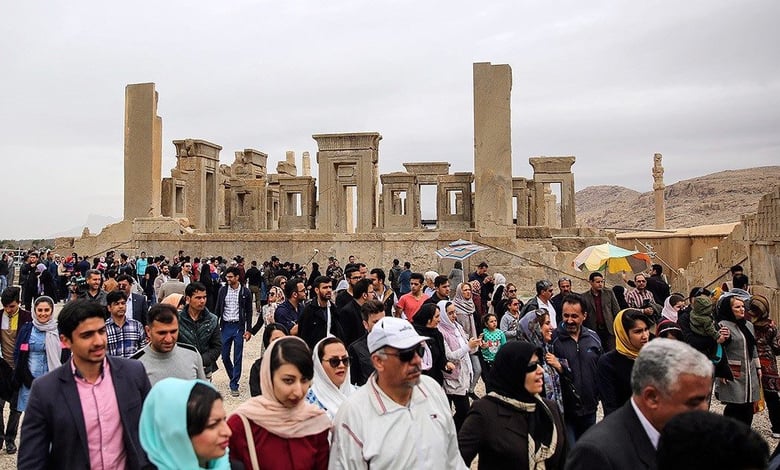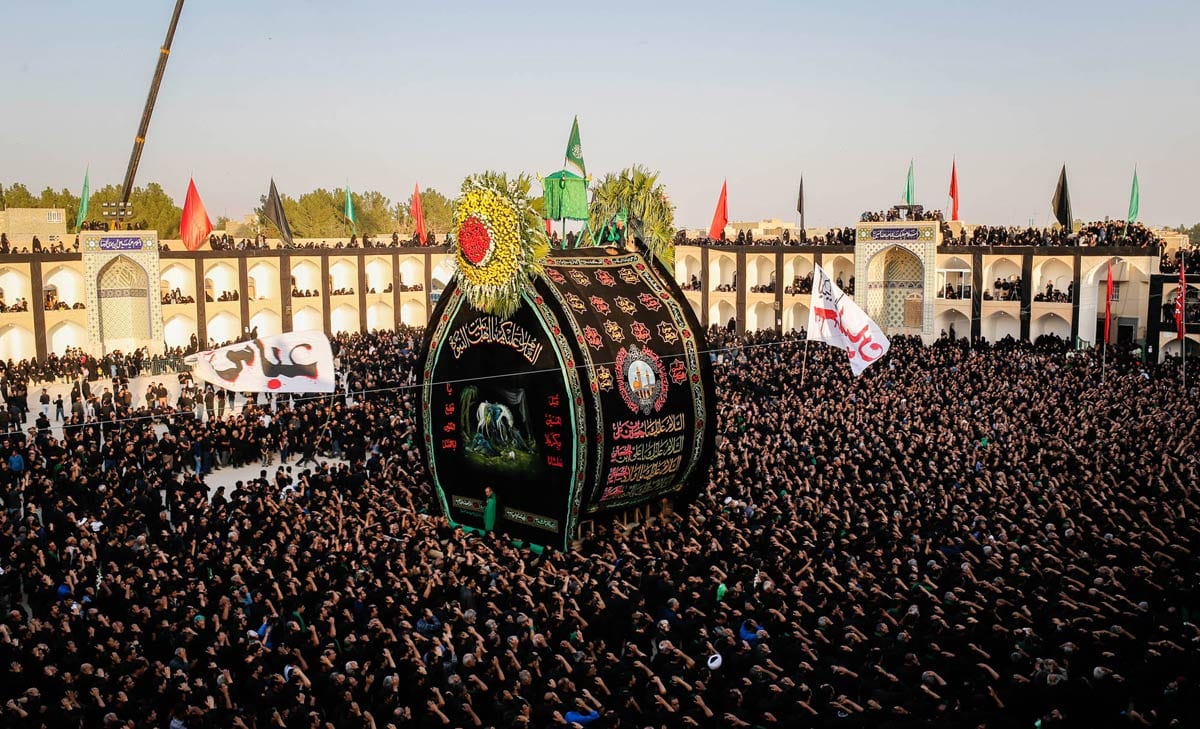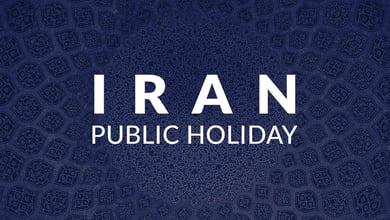The Iranian Calendar: A Guide to the Most Important Holidays

In Iran, people are celebrating a great number of holidays, most of which find their roots in Islamic religious events, such as Ramadan and the celebrations of Tassua and Ashura, during the Muharram month.
They are also several important national holidays that are not religious but related to political events, such as the birth of the Islamic Republic of Iran. While the most beloved holiday in Iran is neither related to Islam nor politics, but finds its roots in the ancient Zoroastrian religion: Nowruz, the Persian New Year. Let’s find out what are Iran’s most important holidays.

Contents
Holidays in Iran: Understanding the Iranian Calendar
Contrary to Western countries, Iranians are used to juggle with several calendars. For everyday life, Iranians use a different calendar than the Gregorian: The Shamsi Calendar, also known as the Solar Hijri calendar. Starting in Spring, on the March equinox, it’s one of the oldest and most accurate calendars in the world, determined by astronomical calculations. The first six months (Farvardin, Ordibehesht, Khordad, Tir, Mordad, and Sharivar) have 31 days, the next five months (Mehr, Aban, Azar, Day, and Bahman) have 30 days, and the last month of the year (Esfand) has 29 or 30 days depending whether it’s a leap year.
Besides this calendar, many religious celebrations are based on another calendar, the Lunar Hijri calendar, commonly called the Islamic calendar, as it is used in almost all Muslim countries. It’s on this calendar that is for instance determined the beginning and ending of the holy month of Ramadan. The Hijri calendar is based on the monthly cycles of the moon’s phases.
Eventually, for practical reasons, Iranians are also familiar with the Gregorian calendar which determines the dates of many international events.
Travelling to Iran during Holidays
If you plan to travel to Iran, it’s a good thing to take into consideration whether your dates of travel will coincide with National Holidays. Indeed, during these days, most businesses are closed and it’s sometimes the case as well for some historical or cultural touristic sites. Plan your trip accordingly! While some holidays only consist in one day off, others may affect your travel more than others. It’s particularly true for the Nowruz holidays: not only has many days off in a row, but is also a time of the year during which Iranians travel a lot within the country: expect places like Shiraz, Isfahan or Qeshm to be particularly crowded at that time.

On the other hand, the month of Ramadan tends to be avoided by travellers: during this month, restaurants and cafes are closed until dawn, and the overall economic activity goes at a slower pace. Likewise, the month of Muharram, during which Tassua and Ashura are celebrated, may not be the best moment to visit Iran, in particular in conservative cities such as Kashan or Yazd, due to the many rituals that take place. However, attending these events can be an interesting experience; just make sure your trip doesn’t include too many national holidays.
Nowruz: Persian New Year Holidays

One of the most important holidays in Iran is the Persian New Year, Nowruz. It takes place during the Spring equinox, which occurs on the 20th or 21st March. The first four days are national holidays (1, 2, 3 and 4th of Farvardin) during which Iranian families visit each other. The New Year holidays are Iran’s most important ones, and most people will resume going to work and school after the 13th day, on Sizdah Bedar (usually the 1st of April), called Nature’s Day.
Nowruz is a celebration that finds its origins in Zoroastrianism and is shared by many countries of Western Asia, Central Asia, Caucasus, and the Balkans. From the ancient Persian kings to nowadays Iranian households, Nowruz has many rituals and symbols to celebrate the renewal of nature. It has even been inscribed as an Intangible Cultural Heritage of Humanity by UNESCO.
To learn more about Nowruz, read our article on the Persian New Year.
Religious Holidays in Iran

There are many religious holidays in Iran, most of which are related to Shia Islam, sometimes both Shia and Sunni Islam. Most of them are either related to the martyrdom or the death of an important figure, such as the demise of Prophet Muhammad and the martyrdom of Imam Hassan that takes place in September. These national holidays can also mark the birthday of a religious figure, such as Imam Ali’s Birthday in January, which is also Father’s Day in Iran.
Among these religious celebrations, some are particularly important. It’s the case for Eid-e Fetr, celebrated in the whole Muslim world and which marks the end of Ramadan. Eid-e Ghorban is another important celebration, which takes place about two months after the end of Ramadan, and commemorates the sacrifice of Prophet Ibrahim. While Eid-al Ghadir, is another major celebration day for Shia Muslims.
Another major month of celebration for Shia Muslims, besides Ramadan, is Muharram. Two major celebrations take place during this month: Tassoua and Ashura which commemorate the martyrdom of Imam Hussein during the battle of Karbala, and takes place on the 9th and 10th days of that month. Ashura and Tassoua are very important holidays in Iran and travellers visiting Iran during these celebrations can attend the many celebrations that take place throughout the country. Eventually, 40 days after Ashura also takes place Arbaeen, which marks the end of the mourning period for Imam Hussein.
It’s important to note that during the months of Ramadan, Muharram and Safar (that follows Muharram), celebrations such as weddings are prohibited.
| National Holidays in 2024 | Shamsi Calendar | Gregorian Calendar |
| Birthday Of Imam Ali And Father’s Day (Tentative Date) | 5 Bahman | 25 January |
| Prophet’s Ascension (Tentative Date) | 19 Bahman | 08 February |
| Imam Mahdi’s Birthday (Tentative Date) | 6 Esfand | 25 February |
| Ramadan Start (Tentative Date) | 22 Esfand | 12 March |
| Martyrdom Of Imam Ali (Tentative Date) | 13 Farvardin | 01 April |
| Eid-e-Fetr (End Of Ramadan) (Tentative Date) | 22 Farvardin | 10 April |
| Eid-e-Fetr (Tentative Date) | 23 Farvardin | 11 April |
| Martyrdom Of Imam Sadeq | 15 Ordibehesht | 04 May |
| Eid-e-Ghorban (Tentative Date) | 27 Khordad | 17 June |
| Eid-e-Ghadir (Tentative Date) | 5 Tir | 25 June |
| Tassoua (Tentative Date) | 25 Tir | 15 July |
| Ashura (Tentative Date) | 26 Tir | 16 July |
| Arbaeen (Tentative Date) | 4 Sharivar | 25 August |
| Demise Of Prophet Muhammad And Martyrdom Of Imam Hassan (Tentative Date) | 12 Sharivar | 02 September |
| Martyrdom Of Imam Reza (Tentative Date) | 14 Sharivar | 04 September |
| Martyrdom Of Imam Hasan Al-Askari (Tentative Date) | 22 Sharivar | 12 September |
| Birthday Of Prophet Muhammad And Imam Sadeq (Tentative Date) | 31 Sharivar | 21 September |
| Martyrdom Of Hazrat Fatima (Tentative Date) | 1 Dey | 21 December |
Political Related National Holidays

Besides religious events, there are many national holidays in Iran that are related to recent political and social events. One of such major national holidays is 22 Bahman, or Islamic Republic Day. Taking place on the 11th of February, it’s the anniversary of the 1979 referendum that led to the downfall of the Pahlavi Dynasty and the birth of the Islamic Republic of Iran
15th Khordad, which takes place on the 9th of June, is another important national holiday that commemorates the demonstrations against the Shah after the arrest of Ayatollah Ruhollah Khomeini. These events marked the beginning of the Iranian Revolution of 1979.
Likewise, the nationalization of the oil industry in 1951 by Prime Minister Mohammad Mossadegh is another important holiday in Iran known as Oil Nationalization Day. It was a crucial moment in Iran’s history, marking the regain of power of the Iranian government over foreign powers, in particular Great Britain. This event later led to the 1953 US-led Coup to overthrow Mohammad Mossadegh.
Eventually, on the 4th of June is also commemorated the death of Imam Khomeini during a national holiday.
| National Holidays in 2024 | Shamsi Calendar | Gregorian Calendar |
| Revolution Day | 22 Bahman | 11 February |
| Oil Nationalization Day | 29 Esfand | 19 March |
| Demise Of Imam Khomeini | 14 Khordad | 03 June |
| Khordad National Uprising | 15 Khordad | 04 June |
Read More


Thank you for this article on political national holidays and it to me emphasises the importance of remembering past challenges as to navigate the future.
True happiness is to enjoy the present, without anxious dependence upon the future.
Many thanks
Steve jones